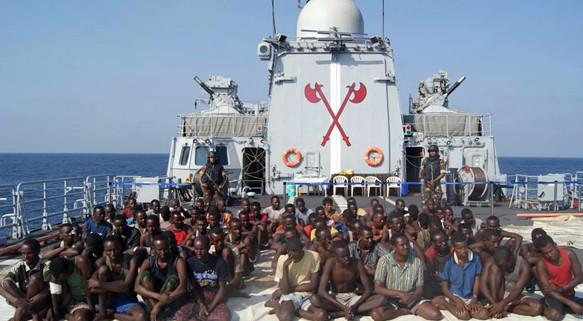
May 2013
May 10th, 2013 marked a full year in which not a single ship was hijacked by Somali pirates. What has happened to these once numerous marauders of the Indian Ocean?
Beginning in 2005 and making a measly $315,000 ransom for a vessel named Feisty Gas, the number of incidents and the sum of ransom payments rose significantly in the following years. The epidemic reached a fever-pitch in 2008, which caused an international response from the European Union and North Atlantic Treaty Organization. The last ship to be hijacked was the Smyrni, taken on May 10th of 2012. For this ship, pirates received a whopping $9.5 million USD for the Greek tanker and her crew of 26.
While the International Maritime Bureau reports that there are still 71 captives being held hostage by pirates, the number of attacks is unarguably in decline. But much of the damage has already been done– different bodies estimate the damage of piracy to the entire global economy to be between $7 billion and $18 billion.
While nobody knows exactly what the pirates are up to, there are a few possibilities. Because of the increased international naval presence, and the prevalence of armed guards aboard merchant vessels, hijacking is significantly more difficult. But as pirate organizations cultivate their operational capacity, it is possible the pirates are just taking a breather– clearing their current stock of hostages and planning a more complicated, in depth campaign of terror.
The other possibility is that they have quite hostage-taking on the high seas, and are beginning to re-focus on land. There are certainly a plethora foreign aid workers in the land that are ripe for taking prisoner.
The private armed-guards that most shipping companies now hire seem to have had the biggest effect on deterring pirate attacks. Bands of pirates will now scout ships before going after them, and usually leave vessels alone if it looks like they will encounter any kind of resistance. The ships themselves are also better prepared, armed guards aside.
Captains have been schooled in best-practices to avoid hijackings, which include numerous strategies. Ships now travel at higher speeds and are capable of evasive maneuvers. They are also outfitted with defensive equipment– including barbed wire, automatic high powered water cannons and sand bags.
There is also a better communication network between merchant vessels and military ones, so that if a vessel is under duress, they can quickly reach out to a member of Operation Ocean Shield or Operation Atalanta for help.
Combined with an increased on-land campaign against the scalawags, the success in reducing the number of pirate incidents is hardly surprising. As the Somali government finally comes into form after decades of civil-war, they are better able to sniff out pirate hideouts and go after the bosses and financiers who remain entirely on land.
As the economy recovers, many hope that piracy will no longer be the only option available to many Somalis living on the coast. Better and safer jobs will be the main reason why pirates cease to exist.
However, as the situation in Somalia is beyond delicate, any relaxation could cause piracy to come roaring back. Ships still need to be vigilant for hijackers, and the rest of the international community needs to continue its strong efforts in addressing multiple causes of this complicated problem.